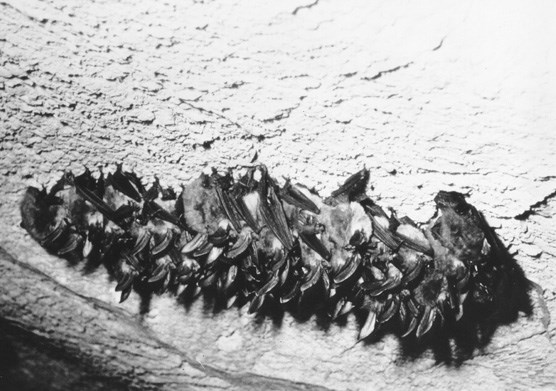
All the bats found at the National Monument are insectivores that can consume as many as 500 insects an hour when feeding. Bats utilize Oregon Caves as a resting stop before returning outside to feed. They also use the caves to find mates, but their pups are usually born to the south. Most bats at the Monument roost under the bark of old-growth trees in the summer. More bats come into the cave during very cold periods, perhaps because at that time their usual roosts under the bark on dead old-growth trees may not provide enough insulation. A few individuals hibernate in the caves during the winter, so bats gates have been installed and the caves are closed in the winter to help protect these misunderstood furry friends. The bats most commonly seen near the cave tour path are Townsend big-eared bats (especially in winter), Yuma bats, and long-eared myotis bats. White-Nose Syndrome White-nose syndrome, a fatal disease in bats, is threatening North American bat populations and could lead to the extinction of some species. Learn more about white-nose syndrome, what measures the Monument has put in place to prevent visitors from spreading it, and what you can do to help. |
Last updated: October 2, 2021
